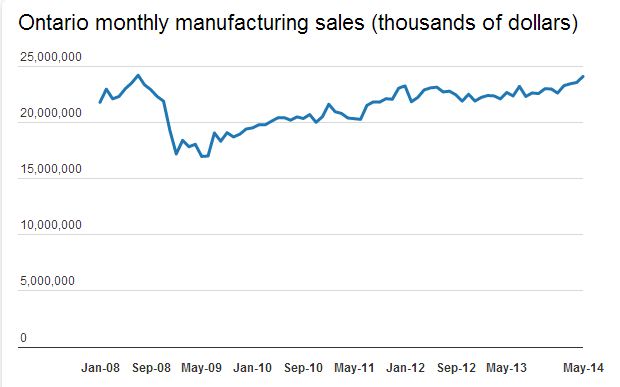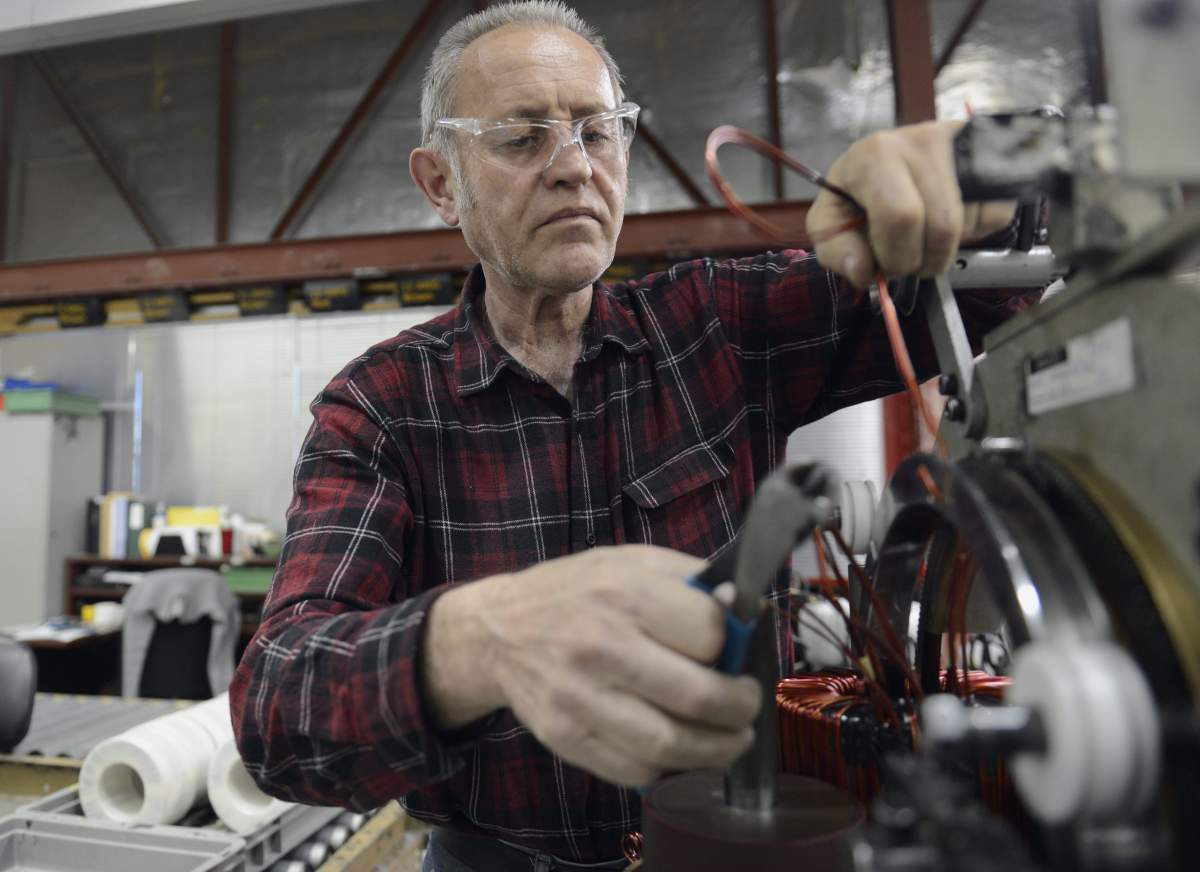Perhaps you’ve heard: The number of Ontarians working in manufacturing jobs reached a 38-year low in Statistics Canada’s most recent jobs numbers.

This revelation produced a not entirely unexpected bout of foreboding hand-wringing, along with fears the province’s manufacturing sector, its employment lifeblood, is in an irreversible haemorrhage – and with it communities reliant on those good-paying blue-collar jobs.
Opposition parties castigated the Liberal government and Premier Kathleen Wynne for having failed to staunch the bleeding.
Should we be this concerned?
Probably not.
Sure, the headline jobs number looks ugly.
But Ontario manufacturing’s hardly in free-fall.
The sector’s unemployment rate – the percentage of Ontarians in the manufacturing sector who are out of a job and looking for work – is actually fairly low: 3.8 per cent compared to 7.5 per cent, Ontario’s unemployment rate across all industries.
This could be because people who’ve lost jobs in the manufacturing sector have gone back to school, switched sectors or given up looking altogether.
And, as any labour statistics nerd will tell you, monthly figures are notoriously volatile.
But either way, manufacturing’s eulogies appear premature.
“I think it’s too early to write off North America,” said labour analyst and Metcalf Foundation fellow Tom Zizys. “We’re not going to compete on low wages; we are going to compete on the higher-quality niche manufacturing.”
In fact, Ontario’s May 2014 manufacturing sales rose to their highest point since 2008. And the biggest increase was – wait for it – in the motor vehicle industry.

There’s no doubt the industry’s shrinking, especially relative to the rest of the province’s economy: Whereas manufacturing was responsible for more than a fifth of Ontario’s GDP in 2002, by 2013 that had shrunk to 12.2 per cent, according to Statistics Canada.

“There’s been a lot of weaning out of companies over the last few years … so the companies that remain have really kind of adapted,” Zizys said.

Get weekly money news
“These are survivors.”
And, he adds, there’s something to be said for “reshoring” – companies moving back to Canada or the United States, often out of a desire to be closer to their customer bases, high-skill communities or technology hubs.
“I don’t think we should be freaking out. But I do think there’s a transition going on,” said Western University economist Mike Moffatt.
“Manufacturing that involves very labour-intensive processes, a lot of people in a factory, I don’t see that being a sustainable business model in Southwestern Ontario any more. Those jobs are gone … and they’re not coming back.”
A sluggish U.S. recovery has meant tepid demand south of the border.
But the manufacturers that’re doing well, Moffatt added, are the ones pursuing more advanced, high-tech work that needs a highly skilled workforce. That’s something Ontario can supply, although the province could do better in training workers and connecting them to jobs.
Both Moffatt and Zizys are skeptical of schemes to give companies grants in exchange for jobs, as Ontario’s Liberals have pledged to do to the tune of $250-million a year.
“What I worry about is giving a large sum of money to a very labour-intensive firm and then, five years later, have them say, ‘Well, this doesn’t make economic sense any more. We’re going to move unless you give us a new pot of money,” Moffatt said.
READ MORE: Ontario gave 109 companies $765M over eight years. So where are the jobs?
On the other hand, simply slashing minimum wage or corporate taxes can prompt a cross-jurisdictional race to the bottom in pursuit of jobs that, really, may not be all that great.
This is all likely of little comfort to someone out of work now, elbowed into obsolescence at 40 or juggling temp jobs that barely pay the rent, let alone allow for eventual retirement.
To that end, economists argue, we need a better way to connect the people who need work with the skills employers need and the employers who need them.
“You create a climate that people want to come here, not for incentives but because there’s a qualified workforce, a skilled workforce that’s easy to access,” Zizys said. “Creating that social infrastructure that allows for business to prosper, as opposed to saying, ‘We’re going to bribe you to come here.'”








Comments